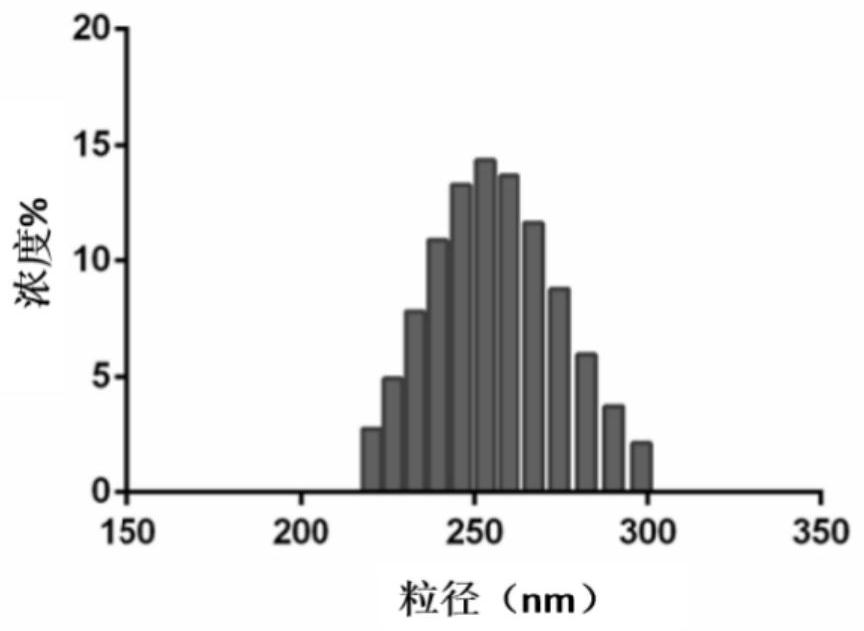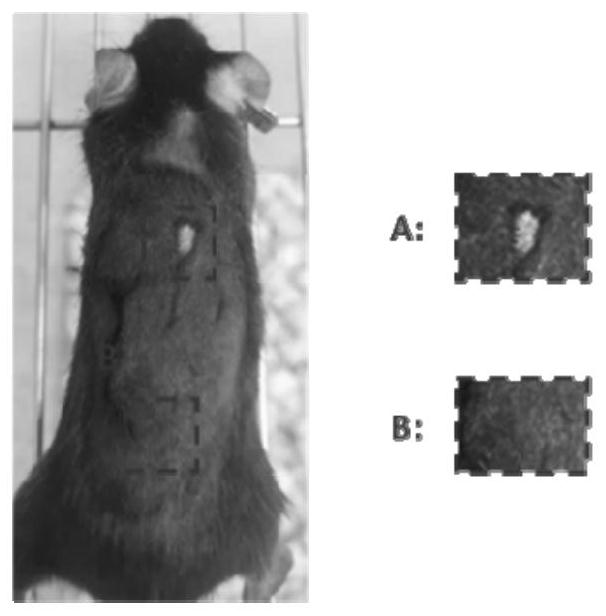Nano photo-thermal material for laser hair removal and preparation method thereof
A nano-light and thermal material technology, applied in the field of hair removal, can solve problems such as skin sensitivity, heat or itching, redness and swelling of the hair removal site, reduce the frequency of laser hair removal, improve the effect of hair removal, and promote the effect of necrosis.
- Summary
- Abstract
- Description
- Claims
- Application Information
AI Technical Summary
Problems solved by technology
Method used
Image
Examples
Embodiment 1
[0036] A kind of nano photothermal material, its preparation raw material comprises indocyanine green, polylactic acid-glycolic acid copolymer, methanol solution, acetonitrile solution and PVA aqueous solution, wherein polylactic acid-glycolic acid copolymer wraps indocyanine green to form nanoparticle, The particle size of the nanoparticles is 220-300nm, and the mass ratio of indocyanine green to PLGA is 1.67:1.
[0037] A method for preparing a nano-photothermal material, comprising the steps of:
[0038] Add 10 mg of indocyanine green into 1 mL of methanol solution, and perform ultrasonic mixing and dissolving to obtain an indocyanine green solution;
[0039] Add 6mg PLGA into 3mL acetonitrile solution, and carry out ultrasonic mixing and dissolving to obtain PLGA solution;
[0040] Mix the indocyanine green solution and the PLGA solution, and add 5 mL of 5% PVA aqueous solution under magnetic stirring, and vortex for 30 seconds to obtain a uniform emulsion;
[0041] Stir...
Embodiment 2
[0044] The application experiment of the nanometer photothermal material that embodiment 1 makes in laser hair removal, the working principle of laser hair removal is as follows figure 1As shown, the specific steps are as follows:
[0045] After 8-week-old C57 mice were anesthetized with 0.1% pentobarbital sodium intraperitoneally, the hair on the back of the C57 mice was removed with Veet hair removal cream, and then the skin on the back of the mice was wiped clean with clean water, divided into upper back And the lower back, take a 3mm circle each on the upper back and lower back, as the treatment part, mark it with a marker pen;
[0046] Use a wet cotton swab to dip 40 μL of indocyanine green-PLGA nano-photothermal material and smear it on the treated part of the upper back of the mouse as the experimental site; the treated part of the lower back of the mouse is not treated as the control site. Such as image 3 As shown, the dotted box A is the experimental site, and the ...
Embodiment 3
[0050] The difference between Example 3 and Example 1 is that the mass ratio of indocyanine green to PLGA in Example 3 is 1:1, and the application experiment of nano-photothermal materials in laser hair removal is the same as that of Example 2.
PUM
| Property | Measurement | Unit |
|---|---|---|
| particle diameter | aaaaa | aaaaa |
| wavelength | aaaaa | aaaaa |
| particle diameter | aaaaa | aaaaa |
Abstract
Description
Claims
Application Information
 Login to View More
Login to View More - R&D
- Intellectual Property
- Life Sciences
- Materials
- Tech Scout
- Unparalleled Data Quality
- Higher Quality Content
- 60% Fewer Hallucinations
Browse by: Latest US Patents, China's latest patents, Technical Efficacy Thesaurus, Application Domain, Technology Topic, Popular Technical Reports.
© 2025 PatSnap. All rights reserved.Legal|Privacy policy|Modern Slavery Act Transparency Statement|Sitemap|About US| Contact US: help@patsnap.com



